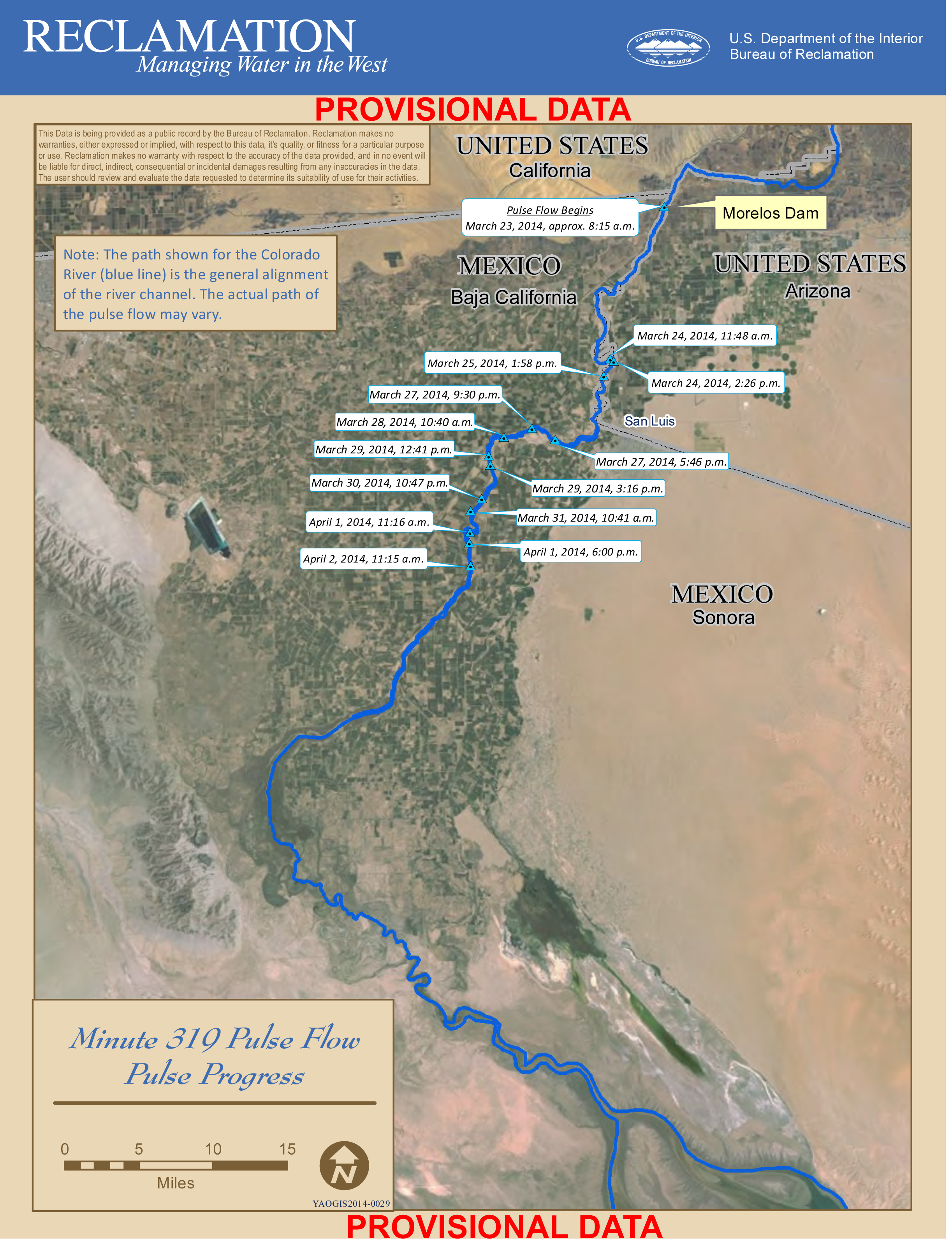While many of us have had to return to more mundane lives, Jennifer Pitt remains in the Colorado River delta, documenting the environmental “pulse flow” as it makes its way toward the ocean. The water’s been slowing as it crosses dry stretches where depth to groundwater is great and dry sand soaks up a big share, and moving more quickly across the stretches where water tables are high, mostly due to nearby irrigated agriculture. Where the Colorado River once spread in sheets of flooding across this delta, now we do some of the same thing with water in irrigation canals. Here’s Pitt:
Now that the dry reach has been saturated, we expect water to move more speedily. The leading edge of the pulse flow will now travel the middle and lower reaches of the delta, reaches that are typically wet due to high groundwater and drainage from nearby agricultural fields. Infiltration will not be nearly as great, and the water should run rather than creep. The pulse flow still has miles to go, but these miles should be easier to travel.
Will the pulse flow reconnect the Colorado River to the sea? We still don’t know. We don’t even know that we’ll be able to see it when it does. But scientists will be out there taking conductivity measurements, and will tell us if, and when, water at the river’s mouth becomes less salty as freshwater arrives.
Pitt posted a nice map from the U.S. Bureau of Reclamation documenting the water’s progress:


Pingback: Another Week of Global Warming News, April 6, 2014 – A Few Things Ill Considered